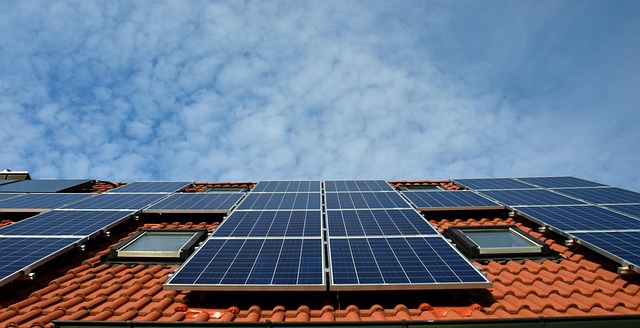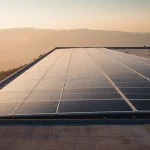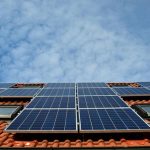Commercial rooftop solar panels offer businesses a proven way to cut energy costs and boost sustainability. Beyond saving money, they provide energy independence and protection against rising electricity prices. Strategic investment in solar solutions can yield significant long-term returns, making them a smart option for businesses seeking both financial and environmental benefits. This introduction highlights why commercial solar is more than just green energy, it’s a financial asset.
Essential information for UK businesses considering commercial rooftop solar panels
For companies seeking reliable energy solutions, Retail Industry Solar Panel Installation provides a proven approach to reducing operational costs while enhancing sustainability. The most immediate appeal is the prospect of substantial long-term savings. Even with upfront investments starting from £16,000 for a 2 kW system in 2025, annual savings might exceed £4,595, which allows many small and medium businesses to realize payback in as little as four to five years. Over a 25-year lifespan, these savings can transform electricity from a volatile expense into a predictable budget advantage.
Have you seen this : Revolutionizing UK Manufacturing: Unlocking IoT Innovations for Enhanced Operational Excellence
UK businesses also gain energy independence, with commercial rooftop solar solutions shielding organisations from ongoing electricity price hikes. Beyond cost control, this reduces reliance on the grid. Some firms even generate surplus power, selling it through Power Purchase Agreements or back to the Capacity Market.
Environmental concerns are not overlooked. Commercial solar panels typically offset carbon emissions, improving a company’s green credentials. However, regulatory requirements impact each project: flat, historic, or protected roofs often require permissions that reputable installers can usually coordinate. Space remains a limitation; systems need ample, unobstructed roof area for optimal return on investment, especially for offices and warehouses. The landscape in 2025 remains dynamic, with market momentum favouring scalable, energy-efficient upgrades.
This might interest you : Unlocking Profit Potential: Cutting-Edge Subscription Models for UK Fitness Brands to Elevate Revenue
Types of Commercial Rooftop Solar Panels and Key Technology Options
Categories of Commercial Solar Panel Systems
In commercial settings, there are three core photovoltaic system types: grid-tied, off-grid, and hybrid solutions. Grid-tied systems, the most prevalent for retail sites, office complexes, and warehouses, remain connected to the mains electricity, ensuring reliability when sunlight levels drop. Off-grid systems suit remote industrial facilities with no grid availability but require larger battery investments and careful load calculations. Hybrid systems merge these approaches by integrating batteries, unlocking flexible energy storage for properties with variable demand.
High-Efficiency Modules, Hybrid Inverters, and Intelligent Batteries
Modern business solar systems often leverage high-efficiency modules (such as monocrystalline panels) to maximise limited roof space. Performance is boosted through hybrid inverters, which channel energy intelligently, switching between grid supply, solar, and storage as needed. Advanced battery storage smooths out supply and demand, enabling usage even after sunset or during peak tariffs. Integrated Energy Management Systems (EMS) monitor consumption in real time, helping businesses make data-driven use decisions.
Choosing the Right Solar Panel Type and System Specification
Select panels by carefully matching efficiency ratings, physical size, and system output to business energy demands and available roof area. Larger offices or retail spaces can accommodate extensive arrays, optimising economies of scale. Prioritise modules with strong warranties and proven performance in UK weather conditions. Assess all elements—mounting, inverters, monitoring platforms—and size the system for both current needs and future expansion.
Commercial Rooftop Solar Installation Process, Costs, and Regulatory Guidelines
Panels, Inverters, and Costs
The price of installing solar panels for UK businesses in 2025 usually revolves around several main components: panels, inverters, mounting systems, energy management systems, batteries, and insurance. For small to medium-sized businesses, costs range from £16,000 to £60,000 for systems between 2 kW and 5 kW, depending on complexity and technology. Insurance can add £10 to £20 per month or require a one-off fee between £400 and £1,600. Routine maintenance costs, usually £100–£200 per year, help extend the life of the system and avoid unexpected breakdowns.
Step-by-Step Installation Process and Compliance
Assess and Design:
A site survey and energy audit determine the most efficient panel placement, optimal sizing, and integration with the business’s current energy use. Engineering assessments establish roof load capacity and electrical compatibility.
Regulatory Requirements:
Obtaining planning permission is necessary in specific situations, such as installing panels on flat roofs or heritage properties. Compliance with building regulations and securing all required electrical certifications are mandatory steps before connecting the system to the grid.
Installation:
Specialists carry out mounting, wiring, and integration with existing electrical systems. Testing and safety checks complete the process, followed by official commissioning.
Key Challenges and Solutions
Businesses face obstacles like restricted roof space, structural limitations, and heritage regulations. Providers can offer bespoke layouts or alternative mounting solutions, enabling even properties with constraints to benefit from solar energy.
Maximising savings, performance, and sustainability with commercial solar
Calculating ROI, payback period, and annual savings based on system size and energy use
Precision: Payback periods for UK commercial solar panels fall between 4–5 years based on system size and energy usage. A typical installation between 2 kW and 5 kW can deliver annual electricity bill savings from £4,595 to £11,895. ROI often ranges from 16% to 45%, and returns increase with system scale due to cost efficiencies. In transparent terms, rising energy costs and dependable solar outputs allow many businesses in 2025 to reach energy independence and shield against price volatility. The investment pays off with both cost savings and enhanced reputation for sustainability.
Maintenance practices, insurance options, and performance monitoring for long-term reliability
Maintenance for commercial solar is straightforward: annual costs hover between £100 and £200. Routine checks, inverter inspections, and panel cleaning help preserve system efficiency across the panels’ 25-year lifespan. Some businesses opt for DIY checks, though insured professional inspections add peace of mind. Insurance is available as either a modest monthly increase (£10–£20) on existing policies or as a one-off, specialist fee (£400–£1,600) for larger arrays. Real-time performance monitoring tools now enable businesses to track energy output, diagnose issues rapidly, and optimise ongoing returns.
Leveraging tax incentives, VAT relief, and profit opportunities through grid export or battery storage
While direct government grants for commercial installations remain unavailable, a 0% VAT rate applies to solar technology in 2025—cutting upfront costs instantly. Businesses further reduce bills or generate revenue by exporting surplus energy via grid programs or by storing excess in on-site batteries for later use. This approach supports profit generation, maximises self-consumption, and ensures reliable backup power, making solar-powered commercial buildings a forward-thinking investment for energy management and sustainability.











